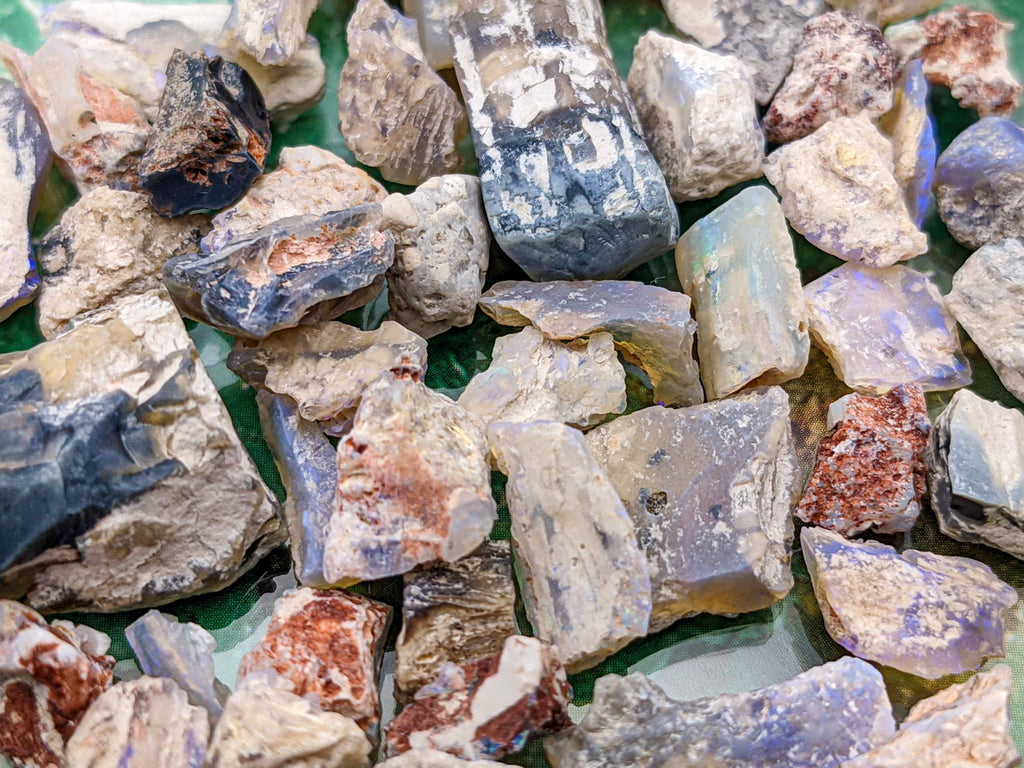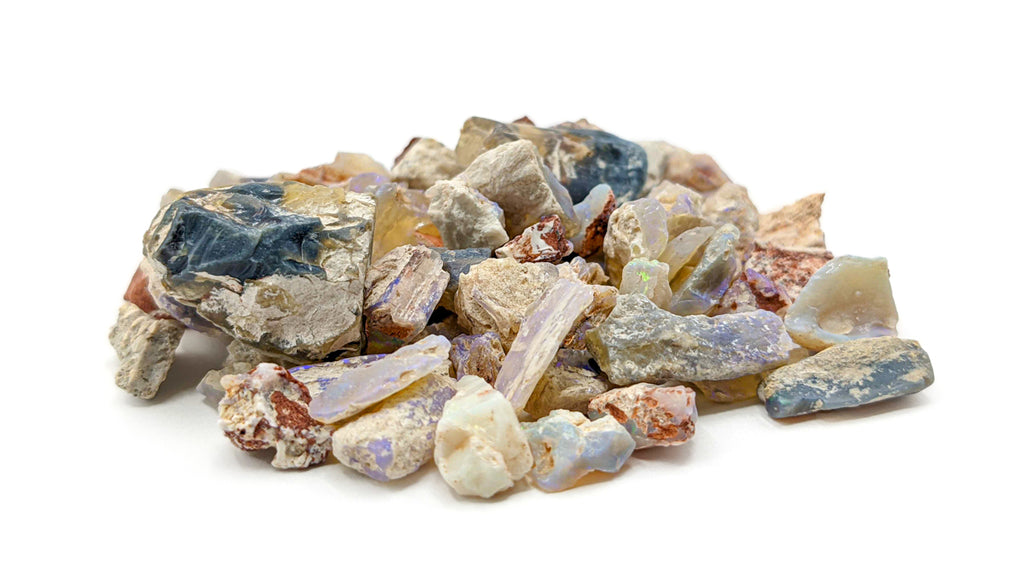Rohopal





Rohopal





















Oben: Vorderseite der Musterkarte
Opale sind Edelsteine, die mit ihrem intensiven inneren Feuer geradezu lebendig sind und seit Jahrtausenden die Aufmerksamkeit der Menschen fesseln. Von Ägypten und dem klassischen Griechenland bis hin zu China und Amerika schätzten antike Zivilisationen die Schönheit des Opals, doch erst in der jüngeren Geschichte haben wir die komplexe Natur dieses einzigartigen Edelsteins verstanden.

Oben: Grant hält ein Rohopalexemplar.
Dieses Exemplar ist ein Fragment aus rohem opalisiertem Pflanzenmaterial aus Lightning Ridge in New South Wales, Australien. Australien ist der größte Opalproduzent der Welt. Die Opalfelder hier stammen aus der Kreidezeit, als sich in Zentralaustralien ein riesiges Binnenmeer befand, das der Wissenschaft als Eromanga-Becken bekannt ist. Es ist etwa 110.000.000 Jahre alt.

Oben: Rohe Opalproben
Das Exemplar befindet sich in einem Acrylglas, das in einer Riker-Vitrine mit Glasdeckel untergebracht ist. Die Box misst 4 1/2 x 3 1/2 Zoll. Eine kleine Informationskarte ist ebenfalls enthalten, die als Echtheitszertifikat dient.

Bitte beachten: Dieses Exemplar erschien erstmals in der dritten Ausgabe des Mini Museums (MM3). Die hier angebotenen Einzelexemplare stammen aus derselben Mine, sind aber deutlich größer. Alle Exemplare sind Unikate und variieren in der Färbung.
More About Opals
"Opals combine brilliant qualities of the most valuable gems and, above all, defy description." ~ Pliny the Elder
 Above: Rough Opals
Above: Rough Opals
Unlike most gemstones, opal does not have a single crystalline lattice structure stretching throughout the material. Rather, opal is a collection of very tiny spheres of silicon-dioxide which are packed together and compressed. Scientists estimate it takes up to five million years to form a single centimeter of natural opal.
The "fire" of opal is the result of diffraction as light passes through the silicon-dioxide sphere within the stone.

As illustrated above, the spheres are aligned in an ordered network that diffracts continually the white light as it passes through each sphere and creates the shifting, brilliant colors we see.

Above: Macro image of an exceptional (and large) rough opal specimen.
Opal forms in areas where water comes in contact with sandstone and filters deep into the Earth, picking up more silica along the way. This silica-rich solution settles into cracks, natural fractures in the rock, or even into fossilized organic material. Under the intense heat and pressure, most of the water evaporates leaving the silica behind.
Above: Hand-carved opal mining tunnel in Lightning Ridge, Australia.
As noted above, this particular specimen is opalized fossil plant material from Lightning Ridge in NSW, Australia. Australia is the largest producer of opal in the world. The opal fields here date to the Cretaceous when Central Australia was home to an enormous inland sea, known to science as the Eromanga Basin (or Sea).
The Eromanga Basin in Central Australia was home to a great inland sea for about 95 million years during the Mesozoic Era. This sea was home to many forms of marine life including Plesiosaurs, Ichthyosaurs, and Ammonites. The deposits in Lightning Ridge date to roughly 110,000,000 years old.
Further Reading
Eckert, Allan W. The World of Opals. John Wiley & Sons, 1997.
Leechman, Frank. The Opal Book.

Above: Back of the Specimen Card









